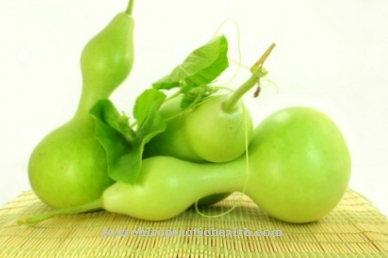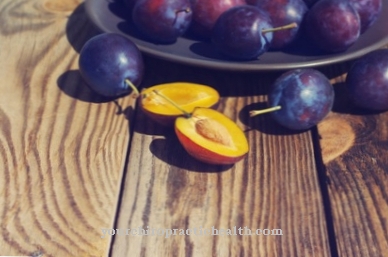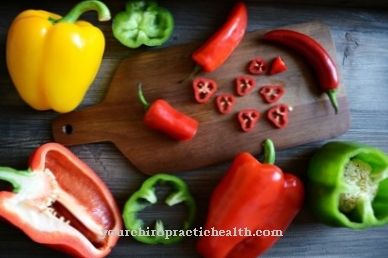Pistachio trees are among the oldest cultivated plants. Hailing from the Middle East, they are popular around the world these days. Iran, Turkey and the USA are today's main cultivation areas.
Pistachios taste unmistakably almond-like, sweet and spicy. They refine desserts but also main courses. Pistachios are relatively high in calories. However, they provide valuable polyunsaturated fatty acids and thus contribute to a good cholesterol level.
What you should know about pistachios

Pistachios belong to the sumac family. The pistachio itself is the fruit of all types of pistachio. In the botanical sense, the pistachio is not a nut but rather a stone fruit. The fruits grow on trees that can reach a height of up to twelve meters.
The roots of the tree can branch up to fifteen meters below the ground. The fruit is an oval core with a hard but very thin skin. The color of the shell is brownish, while the inside is light green in color. Pistachio trees are among the oldest cultivated trees in the world. In ancient times it was planned to be added. The plant was probably cultivated even earlier. The pistachio is native to the Middle East. The stone fruit gradually reached European territories via the Mediterranean region. Presumably it was travelers who brought the fruit from the east to the west via the ancient Silk Road. The pistachio used to be a delicacy for the people and the nobility.
Pistachios weren't just seen as food. The nuts were used, among other things, as a coloring agent and as a remedy for various diseases such as toothache and cirrhosis of the liver. The largest growing areas nowadays are Iran, the USA and Turkey. In Europe most of the trees are planted in Italy and Greece. Pistachio trees bear fruit for a very long time, usually for several centuries. The harvest varies greatly. In one year the yields are very high, whereas in the following year the harvest is rather small. However, the yields are constantly fluctuating. A good year is followed by a poor year.
Pistachio fruits develop in the month of July. Pistachios are ripe in September and October. Roasted they are available all year round. The fruits are harvested in September. The nuts are harvested by mechanical tree shaking. Immediately after harvesting, the fruits should be peeled and dried to avoid any loss of quality. Traditionally, the kernels are dried in the sun. The World Conservation Union declared the pistachio tree to be an almost endangered species. Overgrazing and high fruit use are reasons for this. Pistachios are characterized by their almond-like, sweet and spicy taste.
Importance to health
Pistachios are very stomach-friendly foods in the healing arts such as Indian Ayurveda and traditional Chinese medicine. Pistachios are not used regularly in human medicine, nor are any specific areas of indication assigned to them. However, pistachios make a valuable contribution to human health.
Although they are quite high in fat, they provide polyunsaturated fatty acids, i.e. good fats. They thus contribute to a positive blood lipid value. About five percent of pistachios are indigestible, so they are available as dietary fiber. These stimulate the intestinal activity and can provide relief for digestive problems. Pistachios also provide antioxidants. These substances trap free radicals in the human body and render them harmless. Consuming pistachios can help prevent high cholesterol and the resulting cardiovascular disease.
Nutritionists recommend that overweight people consume unpeeled pistachios. As the fruit has to be revealed before it can be eaten, food intake is slowed down. This can contribute to normal eating behavior.
Ingredients & nutritional values
| Nutritional information | Amount per 100 gram |
| Calories 562 | Fat content 45 g |
| cholesterol 0 mg | sodium 1 mg |
| potassium 1,025 mg | carbohydrates 28 g |
| Fiber 10 g | protein 20 g |
100 grams of shelled pistachios contain around 20 grams of protein, 28 grams of carbohydrates and 10 grams of fiber. At 100 grams, 45 grams are fat. This explains their quite high calorific value, with 562 kilocalories per 100 grams. Pistachios contain important minerals.
They provide vitamin E, beta-carotene, vitamin C and vitamins of the B group. They also contain 5 milligrams of sodium, 1020 milligrams of potassium, 135 calcium and 160 milligrams of magnesium. They are a valuable supplier of zinc and iron.
Intolerances & allergies
Intolerance is an over-sensitivity of the human organism to certain allergens. This reaction manifests itself in various symptoms such as itching, rash or difficulty breathing. Like many other "nuts", the pistachio is not a real nut in the botanical sense.
Nevertheless, it is not uncommon for the nut allergy sufferer to be overly sensitive to pistachios. The most common triggers of such an allergy, however, are peanuts, walnuts and hazelnuts. A nut allergy often occurs as a cross allergy with an oversensitivity to pollen. If such an allergy is suspected, caution should be exercised when consuming nuts. Nuts are hidden in many products, such as chocolate. Care should be taken when shopping.
Shopping & kitchen tips
Pistachios are ripe when their skin turns pink and they can be easily separated from the shell. In the trade, the stone fruits are in different versions in the range. Pistachios are available unpeeled, peeled, roasted or salted. The stone fruits are sold in supermarkets, health food stores and weekly markets.
Pistachios are often available fresh in season, especially in the growing countries. Pistachios should generally be stored in a cool place. They go rancid quickly at room temperature. In addition, the fruits should be protected from moisture in order to avoid a possible health-damaging mold infestation. Peeled pistachios should be stored airtight in the refrigerator. So they can be kept for up to four weeks. Shelled pistachios can even be kept for a few months. Pistachio kernels can also be frozen. They keep in this state for about a year.
Preparation tips
Pistachios are mainly used in the production of confectionery. They are part of the well-known Mozart balls and refine pralines and baklava. You can also make a delicious ice cream from the fruit. Certain types of sausage, for example mortadella, are refined with pistachios. The stone fruits are very decorative due to their light green color.
They are therefore ideal for sprinkling pies and cakes. Pistachios not only refine sweets and desserts. The kernels also go well with main courses, vegetarian dishes and dishes from oriental cuisine. The aroma of the nuts can best develop if the kernels are chopped up and roasted for a short time. Pistachios are versatile due to their sweetish and at the same time strongly spicy taste.












.jpg)

.jpg)
.jpg)











.jpg)